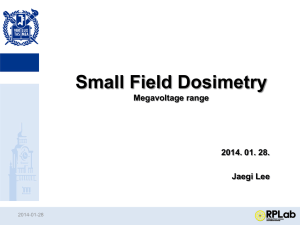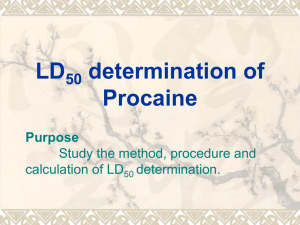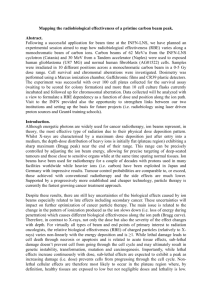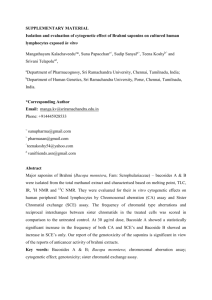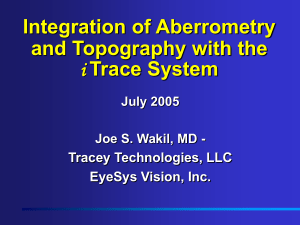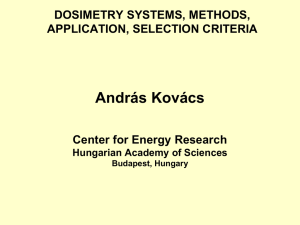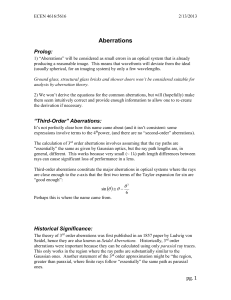Establishing of calibration curves unstable chromosomal
advertisement
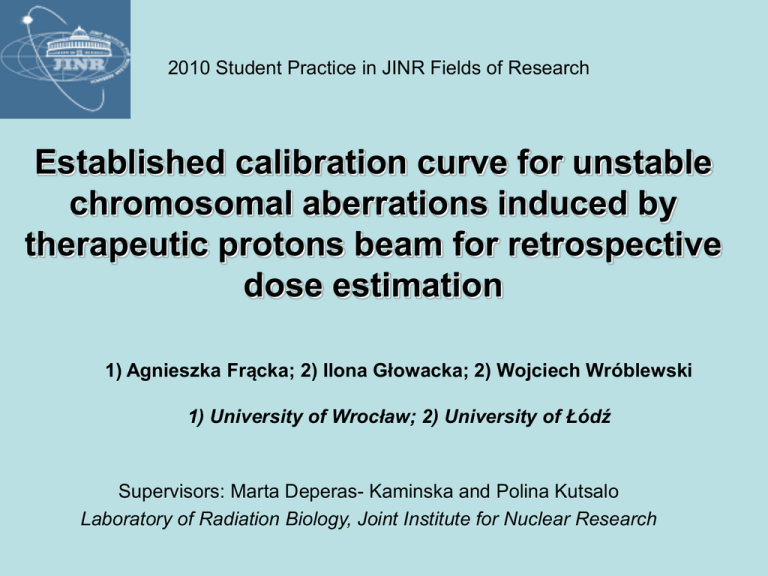
2010 Student Practice in JINR Fields of Research Established calibration curve for unstable chromosomal aberrations induced by therapeutic protons beam for retrospective dose estimation 1) Agnieszka Frącka; 2) Ilona Głowacka; 2) Wojciech Wróblewski 1) University of Wrocław; 2) University of Łódź Supervisors: Marta Deperas- Kaminska and Polina Kutsalo Laboratory of Radiation Biology, Joint Institute for Nuclear Research Biological dosimetry – allows to assess an accidental dose of ionising radiation by analysis of changes induced in chromosomes of human peripheral blood lymphocytes The yield of chromosome aberrations in peripheral blood lymphocytes is the most sensitive indicator for past irradiation exposure, therefore it is used in biological dosimetry for retrospective dose estimation. References: • Biological dosimetry: chromosome aberrations analysis for dose assessment. (1986) International Atomic Energy Agency Technical Report No 260.Vienna. • Cytogenetic analysis for radiation dose assessment. A manual. (2001) International Atomic Energy Agency. Vienna. How are aberrations formed? ionising radiation Primary lesions translocation dicentric acentric fragments Purpose: The purpose of our investigation were to establish calibration curve for unstable aberrations induced by proton beam routinely use to cancer therapy at Laboratory of Nuclear Problems at JINR. What it is calibration curves? Calibration curves are performed for chromosomal aberrations yields scored in lymphocytes of several voluntaries exposed in vitro to the known radiation doses SCHEME OF THE EXPERIMENT for the standard metaphase analysis (dicentric assay) PHA Culture of Irradiated blood BrdU colcemid Fixation 0-24 h 46h Reference: Cytogenetic analysis for radiation dose assessment. A manual. (2001) International Atomic Energy Agency. Vienna. 48-50h light microscope An example of metaphase stained with Giemsa. Cell carried unstable aberrations: dicentrics, acentric fragments and centric and acentric rings. Centric ring ace deletion Acentric ring Dic Image visible under light microscope CABAS is intended for fitting dose-response curves. The software is intended for fitting a linear-quadratic dose-response relationship by the maximum-likelihood method. It was designed for the purpose of biological dosimetry based on the analysis of chromosomal aberrations - dicentrics and rings, scored on Giemsa stained slides. Reference: Deperas J. et. al. (2007) CABAS - a freely available PC program for fitting calibration curves in chromosome aberration dosimeter. Radiat Prot Dosimetry 124:115-123, 2007. Our results: 140 Number of dic+R per 100 cells 120 Y=A+αD+βD^2 Mean values of aberration frequencies Fitted curves Y- aberration yield; A – control frequency D – dose [Gy] α- linear coefficient β- dose squared coefficient 100 Y=0,0030+0.0980*D+0,0798*D^2 80 60 40 20 0 0.0 0.5 1.0 1.5 2.0 2.5 3.0 Dose [Gy} Figure 1. Fitted dose response curves for sum of dicentrics and centric rings induced by protons in chromosomes of 4 donors. Error bars represent the 95% confidence intervals calculated for the mean values. Conclusion: We established dose calibration curve for unstable chromosomal aberrations induced by therapeutic proton beam in the dose range from 0 to 3 Gy. The calibration curve may be useful to retrospective dose estimation in case of accidental exposure to protons. Acknowledgements Special thanks to: • Marta Deperas-Kaminska and Polina Kutsalo. • Ewa and Władysław Chmielowscy • Roman Zawodny • Stanislav Zdislavovich Pakuliak X-ray photo - 1896 Thanks for your attention





